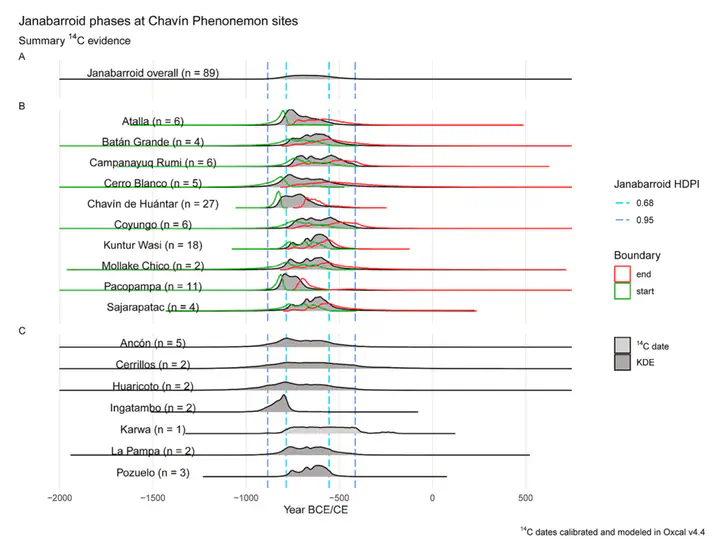
Abstract
Using the Central Andean Chavín Phenomenon as a case study, this paper explores the middle ground between top-down (big data) and bottom-up (Bayesian modeling) approaches to archaeological radiocarbon data. Compiling radiocarbon dates associated with the Chavín Phenomenon addresses questions of chronology, demonstrating that the relevant phases at interacting sites are relatively brief and broadly contemporary. In addition, the definition of a discrete span of time associated with the Chavín ́Phenomenon makes it possible to explore the context for that period of heightened interaction. Juxtaposing that timespan with a compilation of Central Andean radiocarbon dates identifies contemporary non-participatory sites, enabling characterization of the sociopolitical milieu within which the Chavín Phenomenon emerged, flourished, and faded. The identification of that corpus of sites also highlights the importance of a shift in focus from identification of interaction to characterization of interaction. Bottom-up approaches to radiocarbon chronology will be a key element of that effort, while high-level summary of radiocarbon assemblages can identify where additional dating and Bayesian modeling can have the greatest interpretive impact.